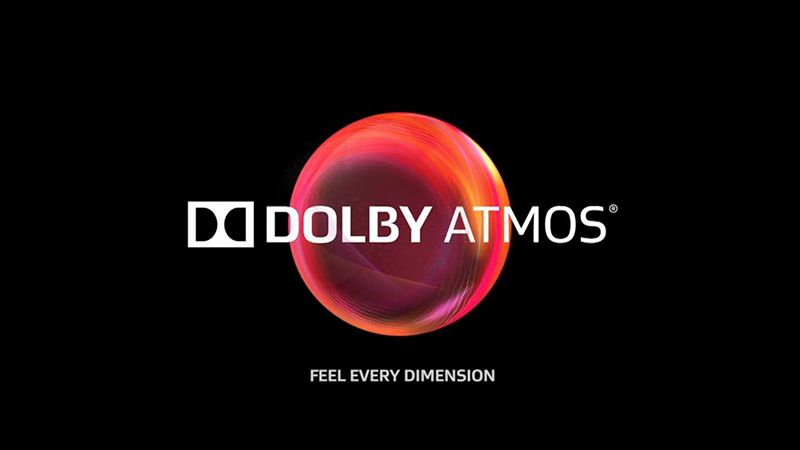Dolby Atmos Demo Sound Test 5.1,7.1 and 9.1 Compilation
7.1 3D Sound Test. Extreme audio video smooth movies films games sound world system bass subwoofer scratch pioneer loud speakers amp sounds theater dream Imax Home Theater behringer ep4000 yorkville b&c cineplex 3d motion ride 300 inch screen ultra clear thx plus musical decibels multi channel lcd widescreen cinemascope wide how to set up onkyo jvc power amps dj midrange gauge deep effects car. 7.1 surround sound data contains 7 individual channels of audio information as well as a LFE (low frequency effects) channel, and is literally meant to be played back on 7 actual speakers and a sub. This is especially true for movies where the audio data uses dolby or thx encoding methods.
Source – Dolby
Downloadable Dolby Atmos Trailers
For Windows Official
Leaf Trailer ►
Amaze Trailer ►
For Macs Official
Dolby Trailer Downloader ►
More ►
Credit – Dolby Atmos
Dolby Atmos technology allows up to 128 audio tracks plus associated spatial audio description metadata (most notably, location or pan automation data) to be distributed to theaters for optimal, dynamic rendering to loudspeakers based on the theater capabilities. Each audio track can be assigned to an audio channel, the traditional format for distribution, or to an audio “object.” Dolby Atmos by default, has a 10-channel 7.1.2 bed for ambience stems or center dialogue, leaving 118 tracks for objects.
7.1 Dolby Surround Sound
Dolby Atmos home theaters can be built upon traditional 5.1 and 7.1 layouts. For Dolby Atmos, the nomenclature differs slightly: a 7.1.4 Dolby Atmos system is a traditional 7.1 layout with four overhead or Dolby Atmos enabled speakers.
With audio objects, Dolby Atmos enables the re-recording mixer using a Pro Tools plugin (available from Dolby) or a Dolby Atmos equipped large format audio mixing console such as AMS Neve’s DFC or Harrison’s MPC5, to designate the apparent source location in the theater for each sound, as a three-dimensional rectangular coordinate relative to the defined audio channel locations and theater boundaries.
During playback, each theater’s Dolby Atmos system renders the audio objects in real-time such that each sound is coming from its designated spot with respect to the loudspeakers present in the target theater. By way of contrast, traditional multichannel technology essentially burns all the source audio tracks into a fixed number of channels during post-production. This has traditionally forced the re-recording mixer to make assumptions about the playback environment that may not apply very well to a particular theater. The addition of audio objects allow the mixer to be more creative, to bring more sounds off the screen, and be confident of the results.
The first generation cinema hardware, the “Dolby Atmos Cinema Processor” supports up to 128 discrete audio tracks and up to 64 unique speaker feeds. The technology was initially created for commercial cinema applications, and was later adapted to home cinema. In addition to playing back a standard 5.1 or 7.1 mix using loudspeakers grouped into arrays, the Dolby Atmos system can also give each loudspeaker its own unique feed based on its exact location, thereby enabling many new front, surround, and even ceiling-mounted height channels for the precise panning of select sounds such as a helicopter or rain.
source
Related Posts:
Dolby Atmos Demo Sound Test 5.1,7.1 and 9.1 Compilation
Source – Dolby
Downloadable Dolby Atmos Trailers
For Windows Official
Leaf Trailer ►
Amaze Trailer ►
For Macs Official
Dolby Trailer Downloader ►
More ►
Credit – Dolby Atmos
Dolby Atmos technology allows up to 128 audio tracks plus associated spatial audio description metadata (most notably, location or pan automation data) to be distributed to theaters for optimal, dynamic rendering to loudspeakers based on the theater capabilities. Each audio track can be assigned to an audio channel, the traditional format for distribution, or to an audio “object.” Dolby Atmos by default, has a 10-channel 7.1.2 bed for ambience stems or center dialogue, leaving 118 tracks for objects.
Dolby Surround 7.1 Test Download
Dolby Atmos home theaters can be built upon traditional 5.1 and 7.1 layouts. For Dolby Atmos, the nomenclature differs slightly: a 7.1.4 Dolby Atmos system is a traditional 7.1 layout with four overhead or Dolby Atmos enabled speakers.
Dolby Sound Test 7.1
With audio objects, Dolby Atmos enables the re-recording mixer using a Pro Tools plugin (available from Dolby) or a Dolby Atmos equipped large format audio mixing console such as AMS Neve’s DFC or Harrison’s MPC5, to designate the apparent source location in the theater for each sound, as a three-dimensional rectangular coordinate relative to the defined audio channel locations and theater boundaries.

During playback, each theater’s Dolby Atmos system renders the audio objects in real-time such that each sound is coming from its designated spot with respect to the loudspeakers present in the target theater. By way of contrast, traditional multichannel technology essentially burns all the source audio tracks into a fixed number of channels during post-production. This has traditionally forced the re-recording mixer to make assumptions about the playback environment that may not apply very well to a particular theater. The addition of audio objects allow the mixer to be more creative, to bring more sounds off the screen, and be confident of the results.
The first generation cinema hardware, the “Dolby Atmos Cinema Processor” supports up to 128 discrete audio tracks and up to 64 unique speaker feeds. The technology was initially created for commercial cinema applications, and was later adapted to home cinema. In addition to playing back a standard 5.1 or 7.1 mix using loudspeakers grouped into arrays, the Dolby Atmos system can also give each loudspeaker its own unique feed based on its exact location, thereby enabling many new front, surround, and even ceiling-mounted height channels for the precise panning of select sounds such as a helicopter or rain.
source

Related Posts:




